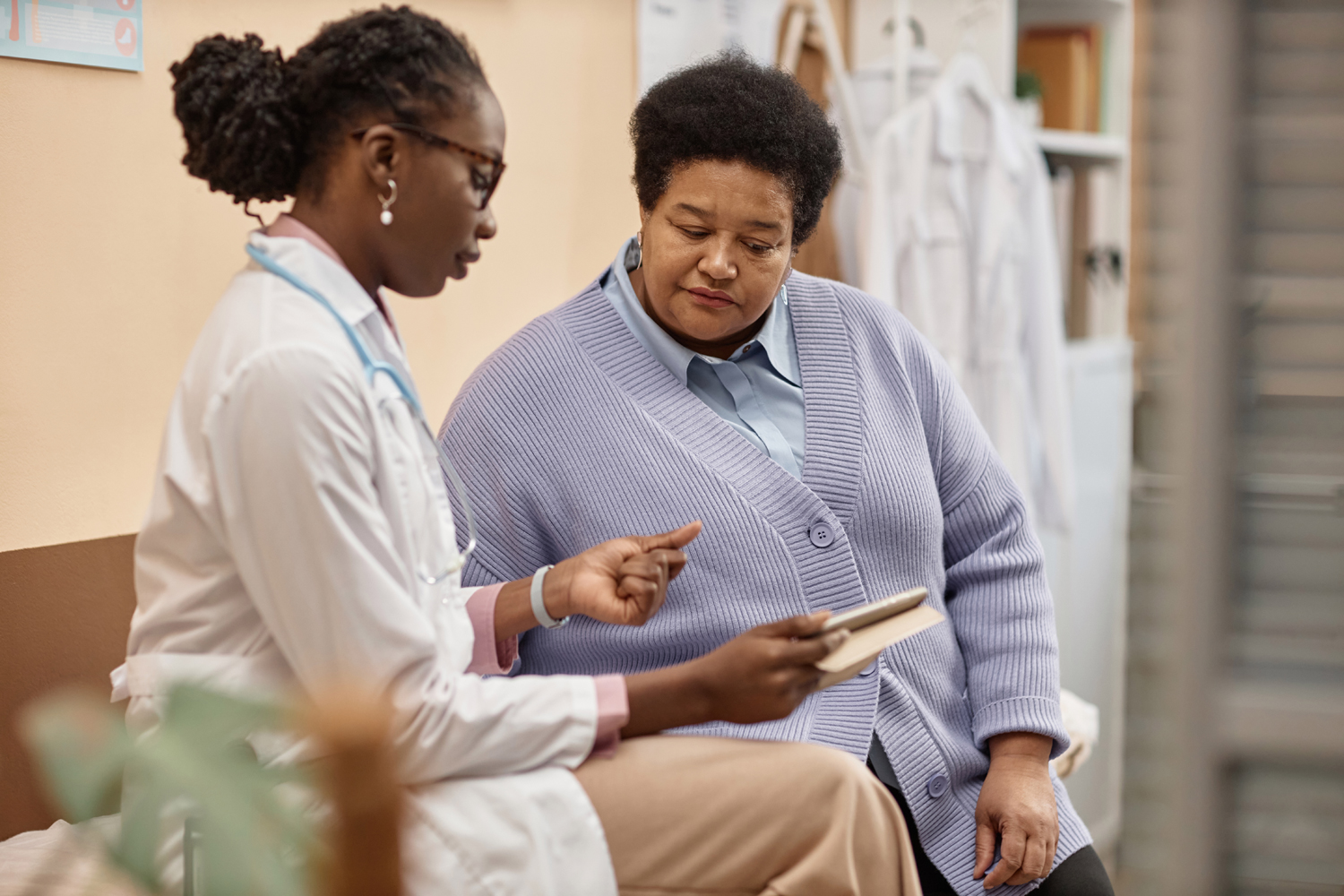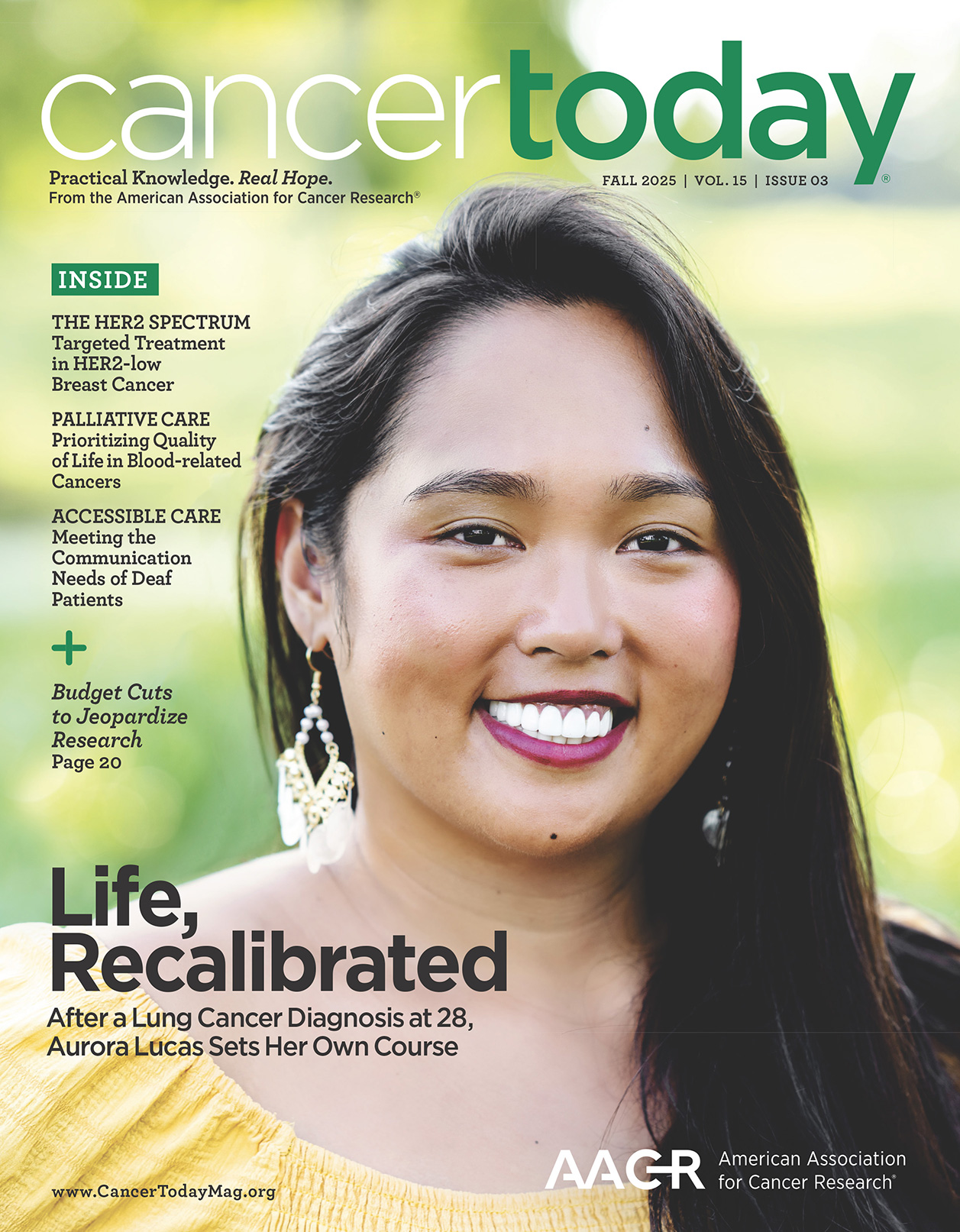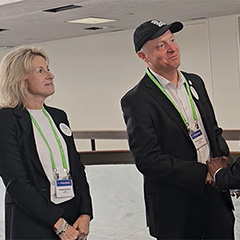WHEN KATE KORSON FOUND A LUMP in her breast in January 2023 at age 33, she immediately feared it was cancer. Even still, the results from diagnostic testing came as a shock: stage III triple-negative breast cancer, an aggressive form of the disease that lacks the three main vulnerabilities doctors usually target for treatment.
But Korson had a plan. About two decades earlier, her mother, Marcy Korson, was diagnosed with stage III colorectal cancer. Marcy eventually sought treatment at Penn Medicine in Philadelphia, where she entered a clinical trial and emerged cancer-free. So after her own diagnosis, Kate Korson boarded a plane from her home in Colorado, flew to Philadelphia and told doctors at the same hospital what she wanted.
“I’m 33 with stage III breast cancer,” Korson recalled telling them. “Study me.”
Korson’s strong desire to enter a clinical trial for treatment is emblematic of growing trends in cancer care, according to a study published this spring in the Journal of Clinical Oncology. Led by Joseph Unger at Fred Hutchinson Cancer Center in Seattle, the team of researchers behind the paper set out to test a commonly held belief within oncology: that most patients are reluctant to enter into clinical treatment trials.
The results of the study, Unger says, cast significant doubt on that notion. Examining Commission on Cancer data representing more than 70% of all annual U.S. cancer diagnoses, the study found that 7.1% of all patients participated in cancer treatment trials, which represented about a doubling of rates observed in the 1990s and early 2000s. When the figures were extended to include participation in other research, such as contributing biopsy samples to a database or participating in surveys, patient participation ballooned to more than 1 in 5 patients.
Based on his personal experiences, Unger was not surprised by the findings.
“I’ve interacted with a lot of patients and patient advocates, and seeing their passion for clinical trial research … it did not match the general gestalt of the literature that patients just really don’t want to participate,” Unger says.
But the study also found reason for concern. Unger says the data showed significant inequity in access to clinical trials. At National Cancer Institute-designated cancer cancers, which are often major institutions located in urban areas like Penn Medicine, nearly 22% of cancer patients enroll in a clinical trial. But among other hospitals, which serve the majority of patients nationwide, enrollment is in the single digits, including just 4% at community-based centers.
Trends Offer Both Hope and Concern
Tanya Dorff, an oncologist and researcher with City of Hope Comprehensive Cancer Center in Duarte, California, has seen firsthand both of the dynamics identified in Unger’s study. On one hand, she says, it seems fewer of her own patients harbor negative attitudes toward clinical trials than they did a decade ago, which Dorff suspects may be due in some part to the success of novel drugs like immune checkpoint inhibitors.
But in a separate study Dorff co-authored that was published April 29 in JAMA Network Open, a survey of 58 cancer centers across 25 states found “considerable disparities” in trial access between facilities, including “fewer industry-sponsored trials at practices with smaller patient volumes and fewer early-phase trials” in rural and suburban areas.
Dorff and Unger offer up several explanations and solutions for the disparities. Unger notes that more clinical trials are now conducted by pharmaceutical companies than in previous decades, and thus fewer studies are sponsored by government entities like the National Cancer Institute. While Unger suspects this has boosted the overall percentage of patients participating in clinical trials, he says the data suggest industry-backed trials make less of an effort to enroll patients from diverse geographic areas.
“The [Food and Drug Administration] has recently recognized that representation is an issue for industry-sponsored trials and has put out a guidance really trying to encourage sponsors to do a better job,” Unger says.
Dorff adds that community-based centers also likely suffer from staffing levels that make trial participation difficult.
“Heavily scheduled physicians may choose to offer standard care rather than a trial due to time limitations,” Dorff says. “Staffing and incentives may be needed to overcome this barrier.”
However, there are reasons for optimism. Dan Vogl, a hematologist-oncologist and clinical researcher at Penn Medicine, says the COVID-19 pandemic forced clinical trials to innovate.
“We really had to focus on every single visit a patient was making to a study center and justify whether it was necessary,” Vogl says. “It turns out a lot of things can be done remotely.”
That opened the door to enrolling more patients from farther-flung locations, since remote check-ins could cut down on burdensome travel and encourage more patient enrollment in trials located at major cancer centers like Penn Medicine.
Kate Korson would love to see more equitable access to clinical trials. After meeting with doctors, she enrolled in a clinical trial for an experimental chemotherapy, and a year later she is in remission. But when a friend’s sister was diagnosed with the same condition in another part of the country, Korson unsuccessfully tried to help her find a similar study.
“A lot of people, unfortunately, just don’t have access,” Korson said. “Trials are also a little more time consuming. … I can see how a single mother with three kids is going to struggle to get to the hospital once a week to get blood taken on top of everything else.”
Cancer Today magazine is free to cancer patients, survivors and caregivers who live in the U.S. Subscribe here to receive four issues per year.





